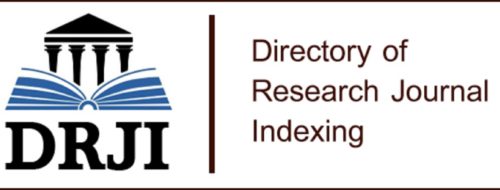OPTIMAL PROJECTION OF ELECTRICAL DEMAND OF THE COTOPAXI ELECTRICAL COMPANY
Keywords:
Electric demand, LEAP, Sustainable efficiency, ProjectionAbstract
The article presents an analysis of the projected electricity demand in the province of Cotopaxi, utilizing the LEAP model to conduct a detailed projection of energy demand for the period 2022-2050. The research addresses the need to anticipate infrastructure requirements and assess the impact of energy efficiency policies. It is projected that electricity demand will increase from 381,657 PJ in 2022 to 692,754 PJ in 2050, reflecting an annual growth rate of 2%. Although rural demand currently predominates, a significant increase in urban demand is anticipated, rising from 23.1% in 2022 to 26.8% in 2050. These findings are crucial for sustainable energy planning, emphasizing the need to improve existing infrastructure and adopt energy efficiency measures to manage demand growth and reduce environmental impact. The results provide a solid foundation for the formulation of strategic energy policies in the region, ensuring an efficient and sustainable energy supply in the long term.
Keywords: Electric demand, LEAP, Sustainable efficiency, Projection.
References
Benito, A. O., & Arena, A. P. (2020). Distribuidos de Energía Eléctrica en Sistemas Energéticos Regionales: análisis con el modelo LEAP. AJEA, 5. https://doi.org/10.33414/ajea.5.696.2020
Cai, L., Guo, J., & Zhu, L. (2013). China’s Future Power Structure Analysis Based on LEAP. Energy Sources, Part A: Recovery, Utilization, and Environmental Effects, 35(22), 2113–2122. https://doi.org/10.1080/15567036.2013.764361
David, I., Tamayo, H., Msc, S., Tania, A., & Aguayo, A. M. (n.d.). Challenging inequalities: a socio-cultural analysis of Cotopaxi province. https://doi.org/10.24133/recihys.v2i1.3487
Edgar M. Zapata, & Alvaro S. Mullo Q. (n.d.). PLANIFICACIÓN ÓPTIMA DE LOS RECURSOSENERGÉTICOS DE UNA MICRO-GENERACIÓN DISTRIBUIDA EN EL CANTÓN PUCAYACU COMO RED ELÉCTRICA ALTERNA. Retrieved July 11, 2024, from https://editorialalema.org/index.php/pentaciencias/article/view/675/941
Fontalvo, J., Ramírez, P., & Constante, J. (2018). Prospectiva de Autogeneración en el Ecuador mediante uso de Modelo LEAP. Revista Técnica “Energía,” 15(1). https://doi.org/10.37116/revistaenergia.v15.n1.2018.323
Guaman, J., & Bravo, S. (2021). PDYOT COTOPAXI. https://www.cotopaxi.gob.ec/images/Documentos/2021/PDYOT/PDYOT%20COTOPAXI%202021%20-%202025
Heaps, C. G. (2022). LEAP: The Low Emissions Analysis Platform. Stockholm Environment Institute.
Jha, S. K., & Puppala, H. (2017). Prospects of renewable energy sources in India: Prioritization of alternative sources in terms of Energy Index. Energy, 127, 116–127. https://doi.org/10.1016/j.energy.2017.03.110
Labein Tecnalia. (2007). Guía básica de la generación distribuida.
Meza Segura, J. N., & Luyo-Kuong, J. (2020). Metodología de Pronóstico de la Demanda Residencial para el Planeamiento Energético de Largo Plazo en el Perú. TECNIA, 30(2), 33–45. https://doi.org/10.21754/tecnia.v30i2.862
Mirjat, N. H., Uqaili, M. A., Harijan, K., Walasai, G. Das, Mondal, M. A. H., & Sahin, H. (2018). Long-term electricity demand forecast and supply side scenarios for Pakistan (2015–2050): A LEAP model application for policy analysis. Energy, 165, 512–526. https://doi.org/10.1016/J.ENERGY.2018.10.012
Pazmiño Ordóñez, I., Pico Mera, H., & Abril Chafla, A. (2019). Metodología para proyección de la demanda eléctrica en zonas con un desarrollo cercano a la saturación demográfica. Revista de Investigaciones En Energía, Medio Ambiente y Tecnología: RIEMAT ISSN: 2588-0721, 4(1), 52. https://doi.org/10.33936/riemat.v4i1.1946
S E I. (2005). Long-range Energy Alternatives Planning System User Guide for LEAP 2005. http://forums.seib.org/leap
Salazar, G., & Panchi, B. (2014). Análisis de la Evolución de la Demanda Eléctrica en el Ecuador Considerando el Ingreso de Proyectos de Eficiencia Energética. Revista EPN, 33.
Sepulveda, A., Zeghal, M., Kutter, B. L., Manzari, M. T., Abdoun, T., Escoffier, S., Haigh, S. K., Hung, W.-Y., Korre, E., Madabhushi, G. S. P., Manandhar, S., Okamura, M., Tobita, T., Ueda, K., & Zhou, Y.-G. (2024). Correlation of CPT measurements and relative density of LEAP-2017 and LEAP-2020 centrifuge models. Soil Dynamics and Earthquake Engineering, 181, 108639. https://doi.org/10.1016/j.soildyn.2024.108639
Sreekanth, K. J. (2016). Review on integrated strategies for energy policy planning and evaluation of GHG mitigation alternatives. Renewable and Sustainable Energy Reviews, 64, 837–850. https://doi.org/10.1016/j.rser.2016.06.086
Tastu, J. (2013). Short-term wind power forecasting: probabilistic and space-time aspects. Agencia de regulación y control de energía y recursos no renovables. (2022). SISDATBI. https://sisdatbi.controlrecursosyenergia.gob.ec/index.php
Zhang, C., & Luo, H. (2023). Research on carbon emission peak prediction and path of China’s public buildings: Scenario analysis based on LEAP model. Energy and Buildings, 289, 113053. https://doi.org/10.1016/j.enbuild.2023.113053
Published
How to Cite
Issue
Section
License
Copyright (c) 2024 Scientific Journal INGENIAR: Engineering, Technology and Research

This work is licensed under a Creative Commons Attribution-NonCommercial-ShareAlike 4.0 International License.

















